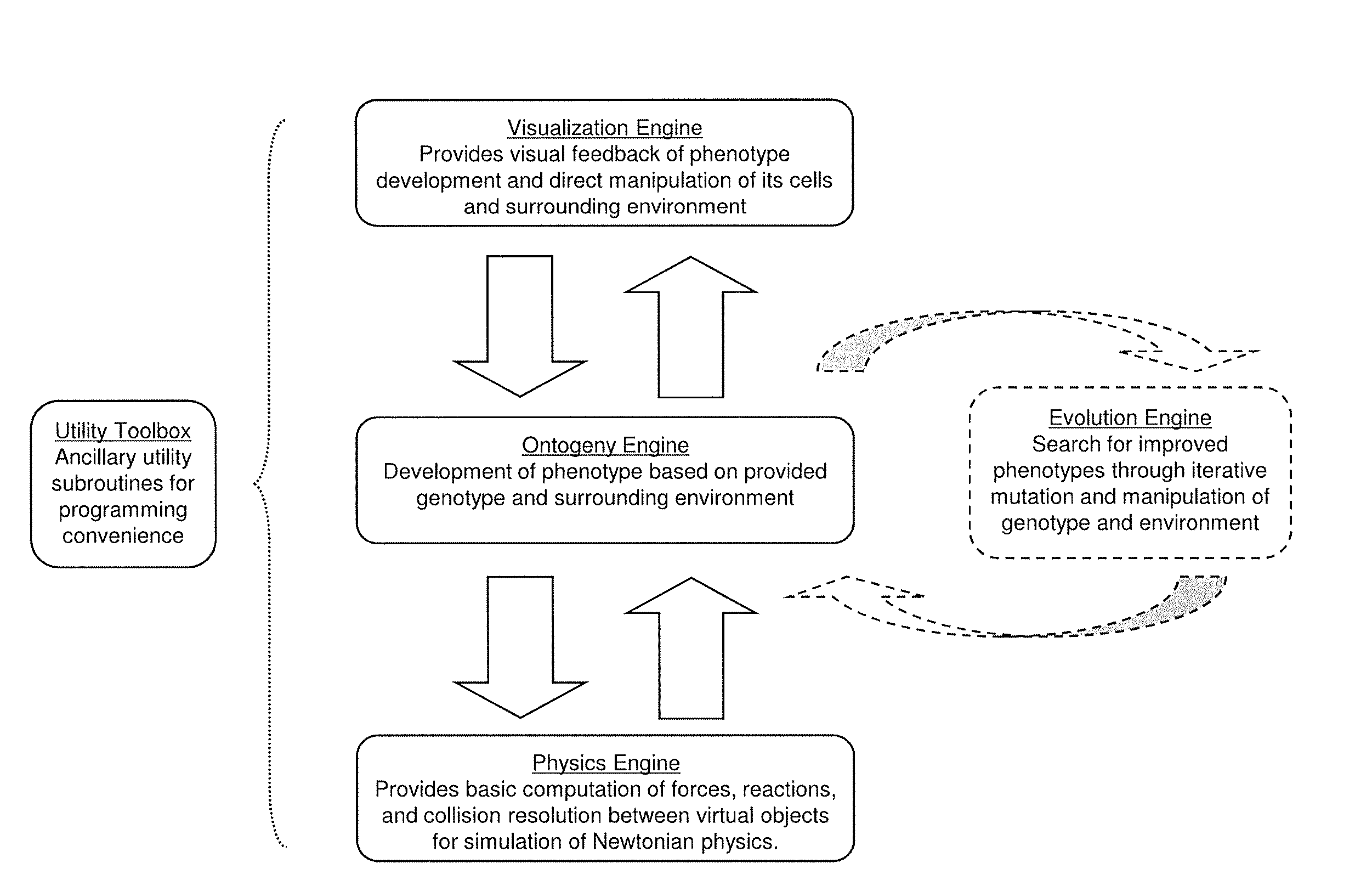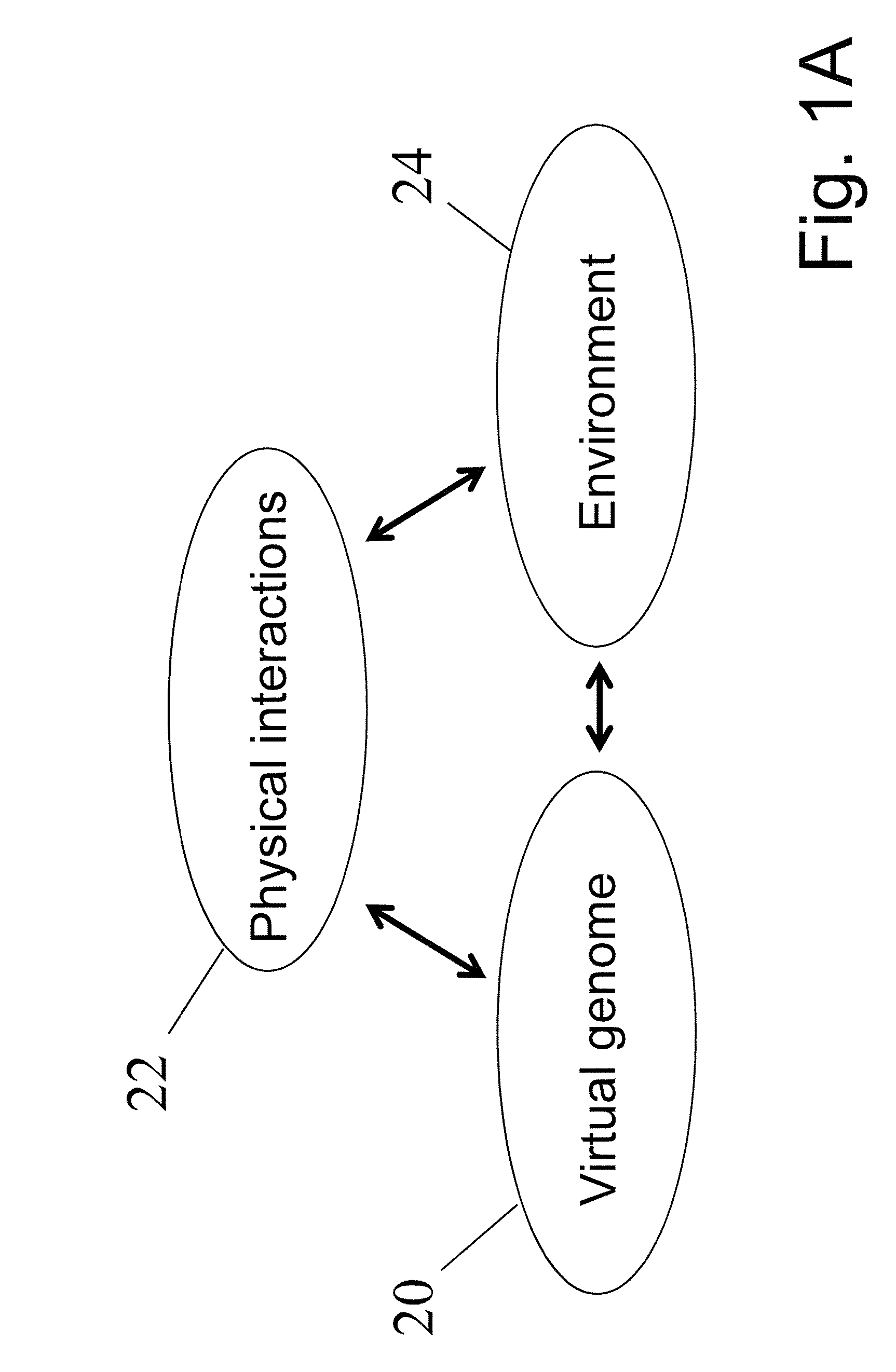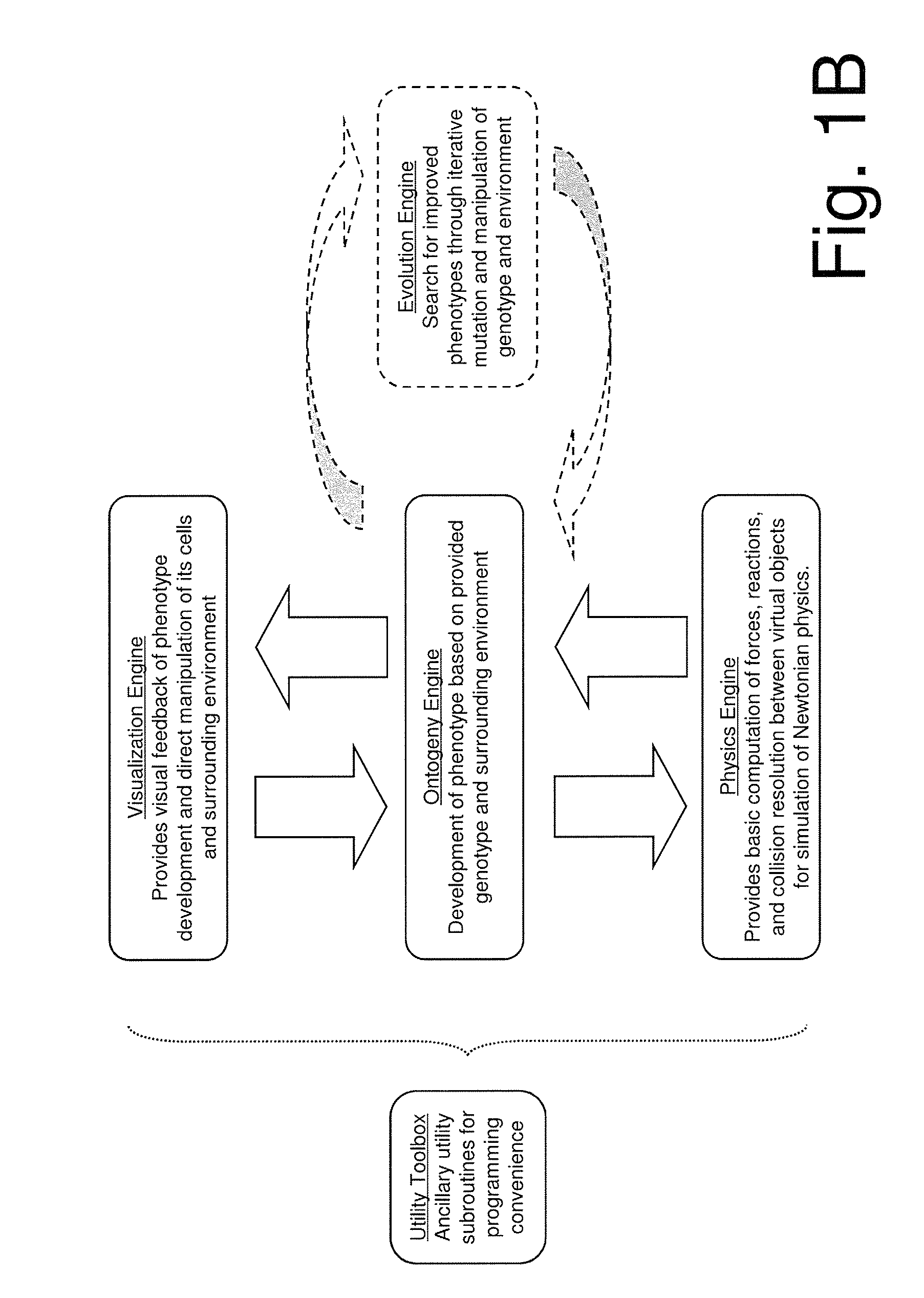Virtual tissue with emergent behavior and modeling method for producing the tissue
a tissue and emergent behavior technology, applied in the field of tissue modeling methods and virtual tissue produced thereby, can solve the problems of limited applicability, complex biological systems obstructing interpretation of experimental results of particular biological pathways or mechanisms, current state of the art in in silico simulation,
- Summary
- Abstract
- Description
- Claims
- Application Information
AI Technical Summary
Benefits of technology
Problems solved by technology
Method used
Image
Examples
example 1
G1. Example 1
Simple Model of Cells Committed to Differentiation
[0299]Introduced in Section D, the first example demonstrates how cells can develop a propensity to differentiate. This section describes an analysis and design approach with which to generate that example. The SGRN for this example is diagrammed in FIG. 9 and discussed above in Section C. Individual elements of this SGRN are described in Section G1.3 with respect to FIGS. 24A-24O.
[0300]G1.1. Describing the Model
[0301]The object is to produce some kind of chemical disparity between two cells that can lead to a persistent or permanent difference between them. This mechanism closely resembles biological mechanisms of daughter cells from stem cells. Typically one daughter cell remains a stem cell and the other transitions to some other type, as illustrated in FIG. 22.
[0302]To generate this model with the preferred embodiment, the user starts with the initial cell. The intent is to have this cell grow and divide such that tw...
example 2
G2. Example 2
Tissue Sheet with Stem Cell Niches
[0329]The second example is a flat sheet of cells with simple virtual stem cells, shown in FIG. 21. This example is more complex than the first, in section G1, and includes stem cell niches and cell differentiation, rather than just demonstrating the propensity for differentiation. The sheet is formed by placing two very large fixed spheres (see section E.3.5) about the initial cell to establish relatively flat, metabolically inert obstacles in the environment and so physically limit the growth to the sheet. The user may use the visualization engine to inhibit display of these large fixed spheres to allow unobstructed examination of the subject sheet.
[0330]Signal isolation similar to that seen in Example 1 was used to establish cell differentiation leading to two types of cells: undifferentiated stem-cell-like cells and differentiated cells analogous to transit amplifying cells. The SGRN for this example is diagrammed in FIG. 26, with i...
example 3
G3. Example 3
Virtual Epithelium
[0386]The third example applies principles from the previous examples to model epithelial tissue. With the preferred embodiment, several approaches with varying fidelity and complexity can be taken to model more complex subjects such as epithelial tissue: the present example describes only one such solution. It will be appreciated that by practicing development principles applied in this and the previous examples, a range of such solutions can be generated.
[0387]FIG. 23A represents a virtual epithelial tissue developed by the preferred embodiment. This small cross-section of epithelial tissue rests on a slightly irregular basement membrane, highlighted in the figure. From the same simulation moment as FIG. 23A, the tissue's stem cells are highlighted in FIG. 23B. In FIG. 23C, again from the same simulation moment as FIGS. 23A and 23B, all cells near the stem cells are highlighted. This indicates that any highlighted stem or transit amplifying cells are...
PUM
 Login to View More
Login to View More Abstract
Description
Claims
Application Information
 Login to View More
Login to View More - R&D
- Intellectual Property
- Life Sciences
- Materials
- Tech Scout
- Unparalleled Data Quality
- Higher Quality Content
- 60% Fewer Hallucinations
Browse by: Latest US Patents, China's latest patents, Technical Efficacy Thesaurus, Application Domain, Technology Topic, Popular Technical Reports.
© 2025 PatSnap. All rights reserved.Legal|Privacy policy|Modern Slavery Act Transparency Statement|Sitemap|About US| Contact US: help@patsnap.com



